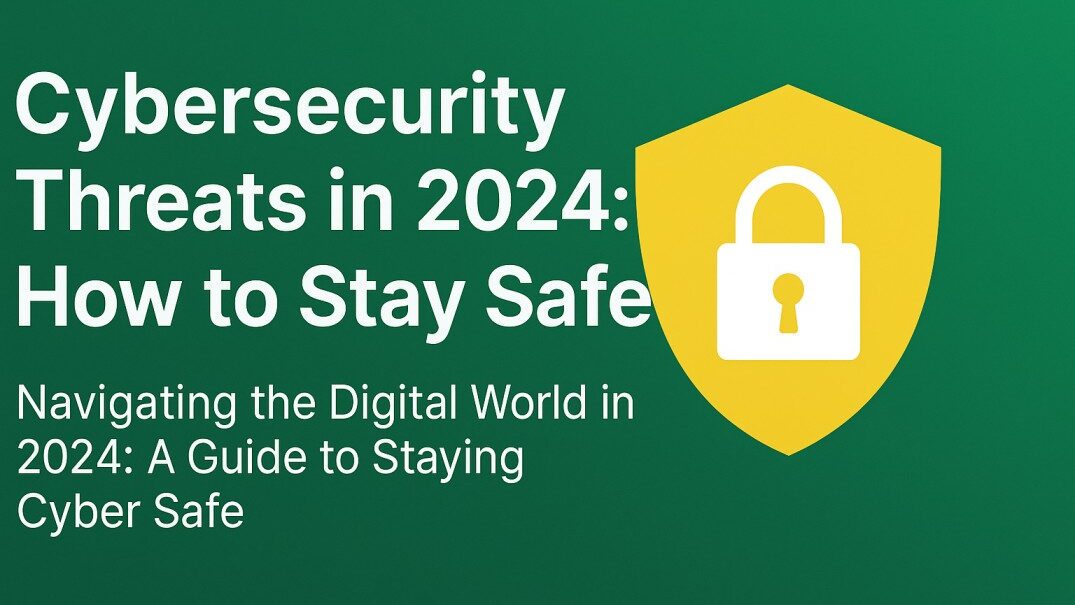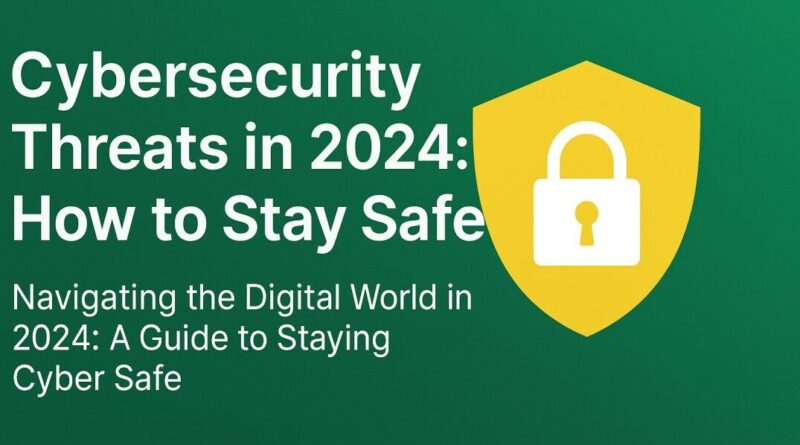Cybersecurity Threats in 2024: How to stay safe
Navigating the Digital World in 2024: A Guide to Staying Cyber Safe
In today’s interconnected world, our lives are more digital than ever. We shop, bank, work, and connect with loved ones online. But with this convenience comes a growing wave of cybersecurity threats. In 2024, the landscape is evolving faster than ever, and staying ahead of the game is crucial for protecting your personal information, finances, and privacy. This blog post will break down the top threats you need to know about and provide actionable tips to keep you and your family safe.
Key Trends and Threats to Watch Out For in 2024
The cybercriminal playbook is constantly being updated. Here are some of the most prominent threats making headlines this year:
- The Rise of AI-Powered Attacks: Artificial Intelligence (AI) is a powerful tool, and unfortunately, cybercriminals are using it to their advantage. They are leveraging AI to create more convincing phishing emails, deepfake videos, and sophisticated scams that are harder to spot. These attacks can be highly personalized, making them feel incredibly real and increasing the chances of people falling for them.
- Ransomware is Getting More Aggressive: Ransomware, where hackers lock you out of your data and demand a ransom to get it back, continues to be a major threat. In 2024, attackers are not just encrypting your files; they are also stealing your data and threatening to leak it online if you don’t pay. This “double extortion” tactic makes these attacks even more financially and reputationally damaging.
- Social Engineering is More Cunning: Social engineering is the art of manipulating people into giving up confidential information. Phishing emails are a classic example, but the tactics are getting more creative. Be wary of “vishing” (voice phishing) and “smishing” (SMS phishing), where attackers use phone calls and text messages to trick you. They might pretend to be your bank, a government agency, or a trusted company to get you to reveal passwords or other sensitive details.
- IoT (Internet of Things) Devices are New Targets: From smart home devices to wearables, our homes are filled with connected gadgets. While convenient, many of these devices have weak security, making them an easy entry point for hackers. Once inside your network, a hacker can potentially access other, more sensitive devices.
Your Action Plan: Simple Steps to Boost Your Cybersecurity
Staying safe doesn’t have to be complicated. By following these simple, yet powerful, practices, you can dramatically reduce your risk.
- Strengthen Your Password Game: It’s time to ditch “123456” and “password.” Use strong, unique passwords for every single online account. A strong password is at least 12 characters long and uses a mix of uppercase and lowercase letters, numbers, and symbols. The best way to manage this? Use a reliable password manager. It will generate and securely store complex passwords for you, so you only have to remember one master password.
- Embrace Multi-Factor Authentication (MFA): This is one of the most effective security measures you can take. MFA requires a second form of verification in addition to your password, such as a code sent to your phone or a biometric scan. Even if a hacker steals your password, they can’t get into your account without that second step. Enable MFA on every account that offers it—especially for your email, banking, and social media.
- Be a Savvy Digital Detective: When you receive an email, text, or phone call asking for personal information, stop and think. Check the sender’s email address for inconsistencies, and hover over links to see the real destination before you click. Be suspicious of urgent messages that demand immediate action. If a request seems legitimate, contact the organization directly using a number or website you know is correct, not the one provided in the message.
- Keep Everything Updated: Software updates aren’t just for new features; they often include critical security patches that fix vulnerabilities hackers could exploit. Enable automatic updates for your operating system, web browser, and all your apps. This ensures you’re always protected against the latest threats.
- Secure Your Network: Your home Wi-Fi network is the gateway to your digital life. Change the default name and password on your router to something strong and unique. Also, make sure you are using the latest encryption standard, like WPA3, if your router supports it. Avoid conducting sensitive transactions like online banking on public Wi-Fi networks, or use a Virtual Private Network (VPN) for added protection.
- Back Up Your Data: In the event of a ransomware attack or a device failure, having a recent backup of your important files is a lifesaver. Regularly back up your data to an external hard drive or a secure cloud service. This allows you to restore your information without having to pay a ransom.
By staying informed and taking these proactive steps, you can build a robust defense against the evolving threats of 2024. Your online safety is in your hands, and a little vigilance goes a long way. Stay smart, stay secure!






Great article! Cybersecurity threats in 2024 are becoming more sophisticated, and it’s crucial to stay informed about new attack methods like ransomware and phishing. I really appreciate the focus on online security tips and data protection strategies these are essential for anyone looking to stay safe online. The discussion on network security trends was particularly insightful. Thanks for sharing such valuable cyber attack prevention advice!
Navigating the Digital World in 2024: A Guide to Staying Cyber Safe